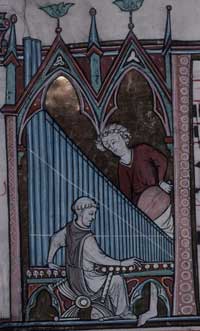 |
 |
 |
 |
 |
 |
 |
|
Celebrating the Hours (5/13)
It behoves men to
sing with manly voices and not imitate the lasciviousness of
minstrels by singing with shrill voices like women, or, in common
parlance, falsetto. And, therefore, we have decreed that extremes
in singing be avoided so that the singing may be redolent of
seriousness and devotion be preserved.
The quality of worship was vital to the Cistercians. The monks were not to rush the psalms, slur or skip the words, and were to sing like men rather than shriek like women. Criticism was levelled at the Black Cluniac monks who took expensive liquorice cordials to help them reach the high notes when singing the Office. (4) Aelred
of Rievaulx was particularly scathing of musical embellishments,
and censured the ‘swelling
and swooping’ of voices, the ‘din of bellows and the humming
of chimes’ which, he argued, made a mockery of worship; sound, he
argued, was of secondary importance and should merely enhance the
meaning (Read
more). It was the job of the precentor and succentor (sub-cantor) to encourage singing in choir and also to ensure that everyone paid attention. Whoever did not sing devoutly was to be beaten.(5)
|
||
